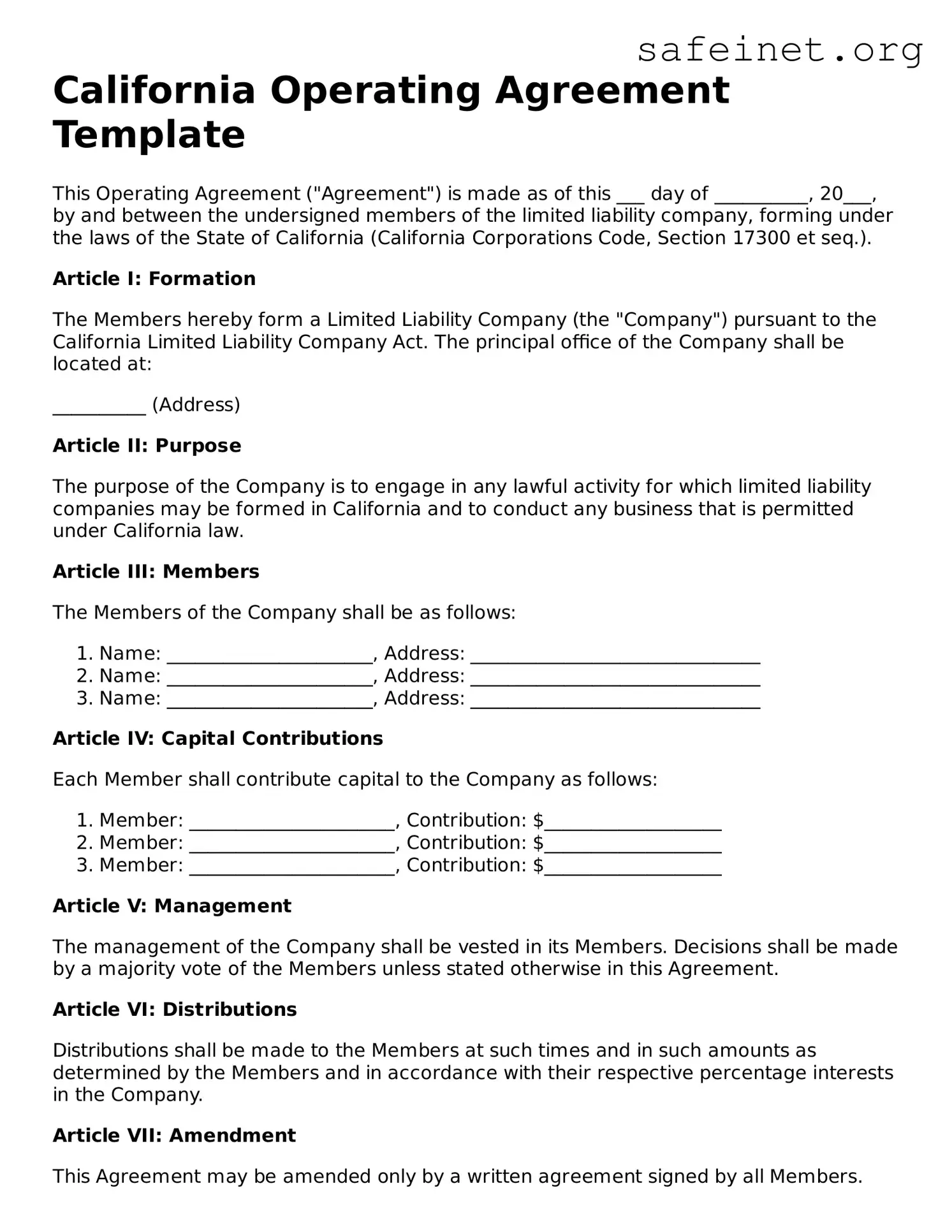California Operating Agreement Template
This Operating Agreement ("Agreement") is made as of this ___ day of __________, 20___, by and between the undersigned members of the limited liability company, forming under the laws of the State of California (California Corporations Code, Section 17300 et seq.).
Article I: Formation
The Members hereby form a Limited Liability Company (the "Company") pursuant to the California Limited Liability Company Act. The principal office of the Company shall be located at:
__________ (Address)
Article II: Purpose
The purpose of the Company is to engage in any lawful activity for which limited liability companies may be formed in California and to conduct any business that is permitted under California law.
Article III: Members
The Members of the Company shall be as follows:
- Name: ______________________, Address: _______________________________
- Name: ______________________, Address: _______________________________
- Name: ______________________, Address: _______________________________
Article IV: Capital Contributions
Each Member shall contribute capital to the Company as follows:
- Member: ______________________, Contribution: $___________________
- Member: ______________________, Contribution: $___________________
- Member: ______________________, Contribution: $___________________
Article V: Management
The management of the Company shall be vested in its Members. Decisions shall be made by a majority vote of the Members unless stated otherwise in this Agreement.
Article VI: Distributions
Distributions shall be made to the Members at such times and in such amounts as determined by the Members and in accordance with their respective percentage interests in the Company.
Article VII: Amendment
This Agreement may be amended only by a written agreement signed by all Members.
Article VIII: Governing Law
This Agreement shall be governed by the laws of the State of California.
IN WITNESS WHEREOF, the Members have executed this Operating Agreement as of the date first above written.
_________________________________
Member Signature
_________________________________
Member Signature
_________________________________
Member Signature
